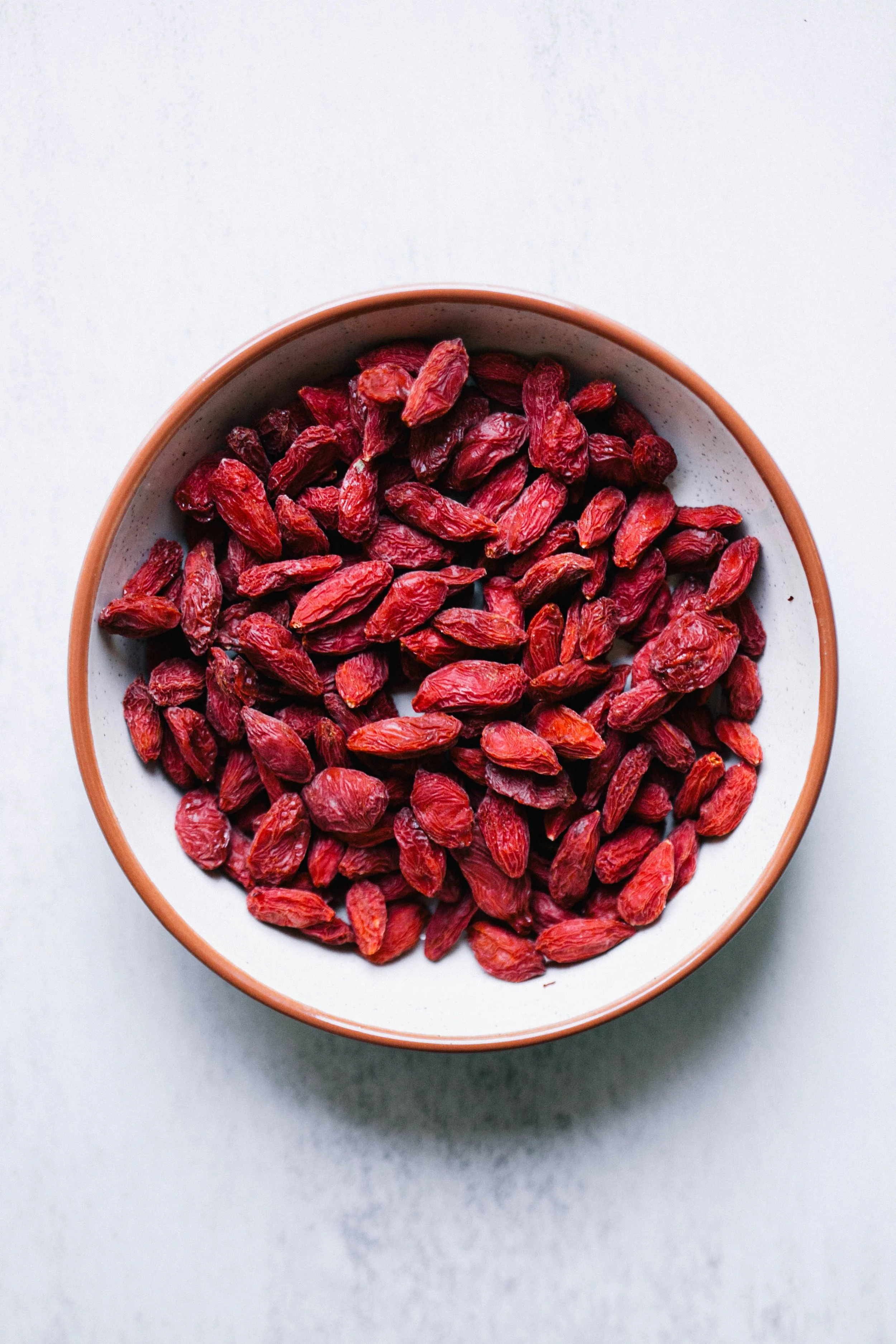20 Store Cupboard Essentials for Northern Chinese Cuisine
Chinese cooking has a reputation for being difficult and mysterious - an instinctive splash of this, a confident pinch of that, ingredients hitting a hot wok with such speed and rhythm that we’re left blinking, wondering what just happened. Many cookbooks don’t help much, breezing through an entire country’s worth of recipes in a handful of pages, putting a spicy Sichuan Mapo Tofu next to delicate Shanghai soup dumplings with Xinjiang barbecue and a Yunnan curry - as if they all belong on the same table.
China is vast. Its regional cuisines are distinct, rooted in local climates, crops, and culinary philosophies. And that’s where things get easier: by narrowing your focus.
At Tea & Oranges, I concentrate on the food of Northern China—hearty, wheat-based, bold in flavour, and shaped by long winters and fertile plains. If you’re curious about this region’s cooking, you don’t need a pantry the size of a supermarket. With just a small, focused set of ingredients, you can start cooking dishes that are deeply satisfying and true to place.
Here are 20 essential condiments, staples, and spices to set you up for success.
Condiments and Sauces
These are the backbone of flavour in Northern Chinese cuisine. A little goes a long way, and you'll use them in almost every dish:
Light Soy Sauce | 酱油 | jiang you
Light soy sauce is the essential seasoning of Chinese cooking, used in almost everything from stir-fries to braises and sauces. It’s less intense than dark soy sauce and gives food a clean, salty flavour. You would not ever want to use Chinese light soy sauce for dipping, as you might, say Japanese shoyu. You should never taste the soy sauce, it should be hidden, making up the backbone of complex flavours.
Dark Soy Sauce | 老抽 | lao chou
Dark soy sauce is thicker, darker, and more intensely flavored than light soy sauce. It’s aged longer and often contains added caramel or molasses, giving it a slightly sweet taste that enhances the colour and depth of braised or stewed dishes. Unlike light soy sauce, which is primarily used for seasoning, dark soy sauce is used to add a pleasing deep colour to dishes, and a complex flavour to sauces and marinades.
Shanxi Black Vinegar | 山西老陈醋 | shanxi lao chen cu
There are many types of black vinegar in China the most famous being Chinkiang Vinegar. Chinkiang and Shanxi Black Vinegar are often mistaken as the same thing, but they are not. The former is from Zhenjiang in the South and is made from rice and fermented for only six months, resulting in a lighter flavour. Shanxi Black Vinegar is aged and results in richer, more complex and sour notes.
Shaoxing Wine | 绍兴酒 | shaoxing jiu
Although a Southern ingredient, Shaoxing Wine is essential is many Northern dishes. It’s a cooking wine (don’t try to drink it) that imparts a slightly sweet and sourness to stir-fries, braises, and marinades. Shaoxing wine has a golden colour and not to be confused with clear ‘Chinese cooking wine’ which serves a different purpose.
Chinese Sesame Paste | 芝麻酱 | zhi ma jiang
This is not the same as tahini. Whilst both come from sesame seeds, they cannot be substituted for each other. Chinese sesame paste is made from roasted sesame seeds and has a richer, more intense flavour with a thicker, harder consistency compared to tahini, which is made from raw sesame seeds and has a milder taste and smoother texture. It is used all across China, but in the North, mostly as dressing in cold vegetable dishes, adding a sticky, moreish richness.
Sesame Oil | 香油 | xiang you
A small amount of this fragrant oil goes a long way in adding depth to dishes. If you find your Chinese sauces don’t taste as good as the restaurant, it’s often a good sesame oil that is the secret ingredient. Don’t cook with sesame oil as it will loose its fragrance. It’s added at the end of dishes as a final seasoning.
White Sugar & Rock Sugar 白糖 & 冰糖 | bai tang & bing tang
White sugar is used in many dressings and sauces in Northern Chinese food. Sugar is not seen as a dessert ingredient in China, rather, every dish tries to balance a combination of flavours between sweet, salty and sour. Rock sugar is used for braises such as hong shao rou and this Pork & Chestnut Stew; the technique is to let the rock sugar melt slowly, and then coat the meat in the syrup.
Salt | 盐 | yan
Soy sauce does not completely replace salt in Chinese cooking. Most dishes rely on both as they have a slightly different flavour profile. Soy sauce tends to add a salty, rich umami flavour, whereas salt is a flavour-intensifier.
Staple Ingredients
These ingredients are the foundation of many Northern Chinese dishes, providing texture and flavor that are integral to the cuisine. Northern cuisine is known as dominated by wheat, and whilst this is true, there are other grains (millet, oats, buckwheat) used as well as rice that is mostly imported from the South, although the ‘Black Earth Plains’ of Dongbei also produce rice in the North.
All-Purpose Flour | 通用面粉 | tongyong mianfen
All-purpose flour is without a doubt, the flour of the north. Most pancakes, flatbreads, dumplings and noodles are made with all-purpose. Hot water is often added to many all-purpose doughs to create a softer bread.
Cornmeal | 玉米面 | yumi mian
A wide variety of corn is grown throughout Northern China and much of it is eaten fresh. However, it is also dried and ground into cornmeal, an important part of the cuisine. It is commonly used to make cornbreads like corn buns (窝窝头) and hu bing (糊餅) as well as a porridge.
Glutinous Rice Flour | 糯米粉 | nuomi fen
Beijing sweets rely on glutinous rice flour, often using its gooey texture in lieu of sugar. The classic Beijing street snacks zha gao (炸糕), matuan (麻团) and tangyuan (汤圆) all require the fine white powder. A glutinous rice flour dough is frustratingly sticky to work with. Wait until you’re feeling calm before attempting a dessert like Rolling Donkeys that relies on rice flour.
White Rice | 大米 | da mi
Alongside noodles and buns, a form of rice is available with almost every meal and in every restaurant if requested. A bowl of plain steamed rice is a beautifully comforting food, as is a simple plain white rice porridge served for breakfast.
Millet | 小米 | xiao mi
One of the oldest grains in China (possibly the world), millet was the first crop to be farmed in Northern China and found it’s way into every type of Northern dish imaginable from porridge to cakes to snacks to alcoholic beverages. In modern Northern China, it’s more likely to be served as a simple porridge for breakfast or on the side of meals.
Dried Soybeans 干大豆 | gan dadou
If you ever want to taste incredible soy milk, then dried soybeans are a must. And for the more adventurous, soybeans are, of course, the basis of tofu. I consider soybeans (and a soy milk blender) an essential part of any Chinese pantry. You might think you don’t like soy milk, but try this recipe once and you’ll be a convert.
Cornstarch | 淀粉 | dian fen
Many Western chefs feel using cornstarch in sauces is cheating, and they make a big song-and-dance about being ‘cornstarch-free’. However, it’s an essential part of Chinese cooking that thickens sauces perfectly, allowing the sauce to be flavoured perfectly without over-reducing.
Spices
These are the essential spices that give Northern Chinese dishes their distinctive flavors.
Sesame Seeds | 芝麻 |zhima
As well as sesame oil and sesame paste, fresh sesame seeds are also used in Northern Chinese cooking. They give a nutty, toasty, oily warmth to dishes. They’re sometimes added to cold sauces, sprinkled as a garnish over main dishes or found topping breads like shao bing.
They are versatile enough to be used in sweet snacks or savoury dishes.
Star Anise | 八角 | ba jiao
Star Anise can easily overpower dishes, but when used correctly, it adds a freshness and a subtle aniseed flavour that cuts through the salty soy sauce of braised dishes.
Bay Leaves | 香叶 | xiang ye
We think of bay leaves as a Western ingredient, but bay is common is braised dishes and stews in Northern China too, adding a warmth and complexity.
Cinnamon | 肉桂 | rou gui
Another ingredient that adds warmth and gentle spice to stews and braises. It’s more common for cassia bark to be used in China, rather than true cinnamon. The chinese, rou gui, can be used interchangeably for cinnamon and cassia bark which makes things confusing, although cassia bark is also known as gui pi
White Pepper (白胡椒 | bai hu jiao)
A classic finishing spice for soups and stir-fries, but use it sparingly - a pinch too many can leave the dish tasting of nothing but pepper.
Nice to Haves
If you’re in the Chinese supermarket and want to go a few steps further, then these are the next few ingredients that will come in handy.
Dried Chinese Dates (红枣 | hong zao)
These are not actually dates at all but a fruit known as jujubes. Jujubes are mostly grown in the Northern provinces of Xinjiang, Hebei, Shandong, Shanxi and Shaanxi. When fresh they resembled tiny blemished apples: crunchy, bitesized with a thin patchy brown skin. When dried, they add a sweet caramel flavour to teas, cakes, buns and porridges.
Goji Berries (枸杞 | gou qi)
Goji berries, also known as Wolfberries, are sour with a chewy sweetness, somewhere between a cranberry and a raisin. They are often used in teas and tonics, porridges and desserts. Goji berries are an important ingredient in Traditional Chinese Medicine used to treat issues in the liver, kidneys and lungs, as well as to treat male infertility.
Glutinous Rice | 糯米 | nuomi
Also called sticky rice, glutinous rice is more commonly used in it’s flour form. However, every year around June, glutinous rice sales spike as families get together to make the sticky rice dumpling known as zongzi. They can be added to porridges to add a nice stickiness, and although nothing to do with Chinese food, make a fantastic rice pudding.
Black Rice | 黑米 | heimi
Black rice is commonly used in porridges in the North, giving a smooth and silky texture that thickens up porridges. It is also added to black soybean milks or nowadays, served as an alternative to white rice to the more health-conscious crowd.
Sweet Flour Sauce | 甜面酱 | tian mian jiang
Also known in English as ‘sweet bean sauce’ or ‘sweet flour sauce’ it is made from fermented wheat flour, salt, sugar and sometimes soybeans. Don’t let the name fool you, it’s not sweet, but packed with umami, and needs to be mixed with other ingredients so as not to overpower. It is a key to the sauce served alongside Peking Duck and vital in the Beijing classic noodle: Zhajiangmian. Think of Sweet Flour Sauce as Beijing’s answer to hoisin sauce but thicker, saltier and less tangy.
Fermented Soybean Paste | 黄豆酱 |huangdou jiang
Fermented Soybean Paste (direct translation: yellow bean paste) is used largely in Beijing cuisine and essential for zhajiangmian, just along with Sweet Flour Sauce (above) and Dried Yellow Sauce) below. It is not actually yellow, but a light brown sauce made by fermenting whole soybeans with salt. It is made in a similar way to miso but runnier and with chunks of beans.
Dried Yellow Sauce | 干黄酱 |gan huang jiang
Made in a similar way to Fermented Soybean Paste (above) but with lower water content. This is like a dark miso, packed with salty umami and used to turn sauces rich and punchy.




























